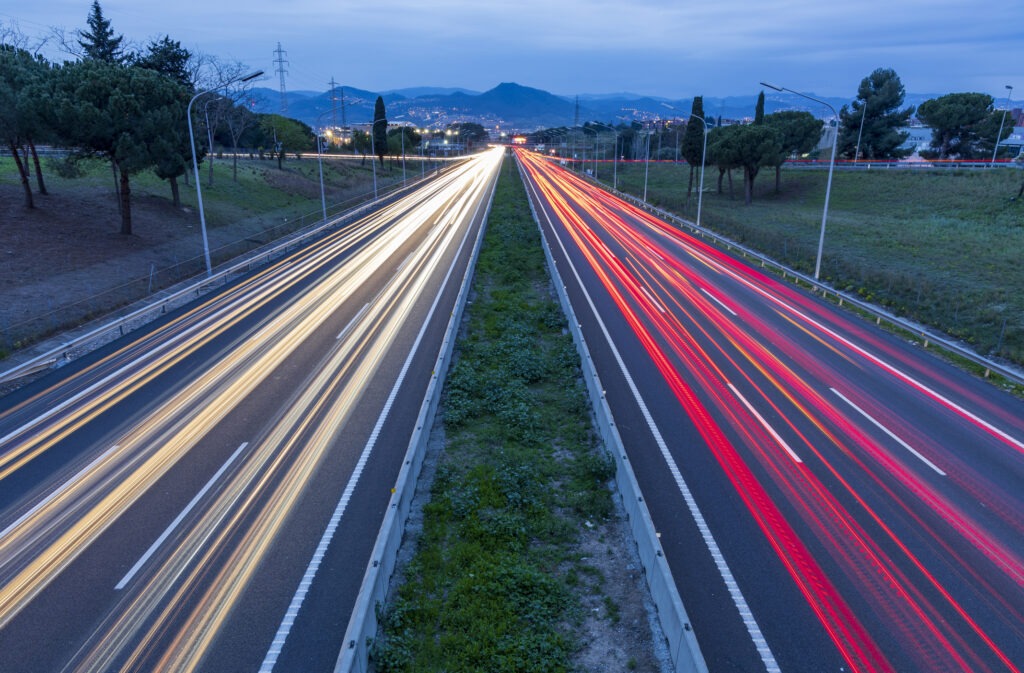How will delaying the UK ban on new petrol and diesel cars impact the market?
21 September 2023

UK Prime Minister Rishi Sunak has confirmed that the ban on new petrol and diesel car sales will be delayed. Autovista24 special content editor Phil Curry assesses the situation and reactions from across the automotive industry.
News that the UK will delay the ban on sales of new petrol and diesel vehicles until 2035 has seen mixed reactions from across the automotive industry. But what are the origins of this ban?
The new-car petrol and diesel ban was first scheduled for 2040, before being brought forward to 2035 in February 2020. Later that year, then prime minister Boris Johnson announced that the country would stop the sale of new internal-combustion engine (ICE) only models from 2030, and that only zero-emission vehicles would be sold as new from 2035. Yet in a raft of net-zero target changes announced by Rishi Sunak, this ban has been pushed back.
It is important to note that this does not mean a delay to the UK moving to zero-emission-only new-car sales. The original 2030 ban was a transitional point towards battery-electric vehicles (BEVs) and fuel-cell electric vehicles (FCEVs) being the sole occupiers of the new-car market in 2035. In the five intervening years, full hybrid-electric vehicles (HEVs), and plug-in hybrids (PHEVs) would still be available.
While not referenced in his speech, the official government release confirming the new measures states: ‘Under revised plans, the government will move back the ban on the sale of new petrol and diesel cars by five years, so all sales of new cars from 2035 will be zero emission. This will enable families to wait to take advantage of falling prices over the coming decade if they wish to.’
Prior to Sunak’s announcement, EV-volumes.com (part of Autovista Group), forecast that by 2030, BEVs would hold an 82% share of the UK market with 1.95 million registrations. This forecast shows the share of ICE vehicles dropping from 45.1% in 2023 to just 4.7% by the end of 2029, before the ban was due to take effect.
This rapid drop may now be smoothed out until 2035. However, with an increase in the number of zero-emission models available on the market, plus improvements in the UK’s charging infrastructure, there is a great deal of debate about the impact the change will have.
A setback for UK automotive industry?
The changes have led to concerns about the instability of governmental support for the automotive market. The new delay adds to worries around a lack of agreement over a Rules of Origin deadline for 2024, and the lack of a promised zero-emission vehicle (ZEV) mandate that is due to come into force in less than 100 days.
Speaking at the recent SMMT Electrified conference, Mikes Hawes, chief executive of the Society of Motor Manufacturers and Traders (SMMT), pointed to these issues and called on the government for clarification.
‘We still do not even know what vehicles can be sold from 2030. Uncertainty creates doubt, and doubt stokes negativity,’ he stated. ‘If you think about what we are trying to do, we need to get the consumers behind us. The infrastructure transition accelerated the investment climate. If you were to turn around now and say, no, we are not going to do that, well we cannot. You cannot do that for environmental progression. You cannot do it for the industry.’
Following the prime minister’s announcement, Hawes stated: ‘The automotive industry’s commitment to a zero-emission new car and van market remains unchanged. Net zero cannot be achieved without this sector’s decarbonisation. The prime minister has confirmed that a mandate to compel the sale of EVs – the single biggest mechanism to deliver net zero – will be published shortly, starting in January 2024.
‘Manufacturers will continue to put innovative new models on the market, but consumers need encouragement to buy more than ever. Today’s announcement must be backed up with a package of attractive incentives and measures to accelerate charging infrastructure to give consumers the confidence to switch. Carrots move markets faster than sticks.’
Ford, which counts the UK as one of its biggest markets, has also criticised the move. The carmaker announced the end of production of the UK’s best-selling vehicle, the Fiesta, at the end of last year, as it made way for a new line-up of electric vehicles by the time of the initial 2030 deadline.
‘Ford has announced a global $50 billion (£40 billion) commitment to electrification, launching nine electric vehicles by 2025,’ stated Lisa Brankin, Ford UK chair. ‘The range is supported by £430 million invested in Ford’s UK development and manufacturing facilities, with further funding planned for the 2030 timeframe.
‘This is the biggest industry transformation in over a century and the UK 2030 target is a vital catalyst to accelerate Ford into a cleaner future. Our business needs three things from the UK government: ambition, commitment, and consistency. A relaxation of 2030 would undermine all three. We need the policy focus trained on bolstering the EV market in the short term and supporting consumers while headwinds are strong: infrastructure remains immature, tariffs loom and cost-of-living is high.’
New deadline welcomed by some
Not all carmakers have been upset by the ban’s delay. Some have looked at the positive implications, especially the opportunity to develop models at their own pace, and having the time to create new technologies that will help the zero-emission market grow further.
‘Toyota has consistently adopted a multi-path technology approach to reduce emissions as much as possible as soon as possible - based on our company’s principles of carbon is the enemy and providing mobility for all,’ a Toyota spokesperson told Autovista24. ‘We have spent billions developing and bringing to market hybrid electric, plug-in hybrid electric, battery electric and hydrogen fuel-cell electric powertrains to support the transition to greater zero emissions transport.
‘The government announcement is welcome as it provides the clarity industry has been asking and recognises that all low emission and affordable technologies can have a role to play in a pragmatic vehicle transition. We believe this can also help relevant parties to further adapt including consumers, manufacturers, infrastructure, and energy providers.’
JLR was also positive about the move. In a statement to Autovista24, the carmaker said: ‘The announcement by the government on the revised end date for the sale of petrol and diesel cars in the UK is pragmatic and brings the UK in line with other nations, which we welcome.
‘JLR's commitment to be fully carbon net zero by 2039 is on track and we look forward to the building of the much-needed infrastructure which will help clients transition to an exciting electric future,’ JLR added.
Looking at the overall market, Jayson Whittington, head of valuations, UK at Glass’s (part of Autovista Group), highlighted the benefits for consumers, who will continue to have a full choice of vehicles for another five years beyond 2030.
‘I think the extension of the ban will have little impact on the direction of diesel, which is already fading fast. It will, however, give OEMs a little more breathing space to transition from ICE into BEV, which may mean we see less drivers moving over to hybrid technology, although with stringent emissions regulations this may still be the direction of travel,’ Whittington said.
‘In terms of residual values (RVs), it is expected that ICE will depreciate at a slower rate as we head towards the ban, so this will likely be delayed by five years. Glass’s does not expect any immediate negative impact on RVs though as a result of this announcement.
‘While some people will undoubtedly be disappointed in this change of direction, it will likely help consumers with affordability of vehicles which is good news for the short-term health of the new-car market,’ Whittington added.
Countering Chinese imports
Sunak’s speech also mentioned that the new date would help to strengthen the UK’s automotive industry, so the country is not reliant on ‘heavily subsidised, carbon-intensive imports from countries like China.’
While this comment seems to indicate that the issue around Chinese imports is one of an increased carbon footprint, Europe’s automotive industry has been wary of the increase in Chinese brands landing on the continent in recent years.
China is rapidly growing its BEV market, and with access to vast amounts of raw materials, together with more development resources and government funding, these vehicles can be sold at a cheaper price than their European counterparts.
The EU is so concerned about the increase in Chinese brands gaining a foothold in the market that it is launching an anti-subsidy investigation. In her recent State of the Union speech, EU president Ursula von der Leyen said: ‘Global markets are now flooded with cheaper Chinese electric cars.
‘Their price is kept artificially low by huge state subsidies. This is distorting our market. And as we do not accept this from the inside, we do not accept this from the outside. Europe is open for competition. Not for a race to the bottom,’ she added.
If the UK continued with its plans for a 2030 ban, those who would prefer to go all-electric but could not afford the models from domestic carmakers would likely turn to the more affordable alternatives offered by Chinese manufacturers.
An example of this would be the rapid rise in popularity of the MG4, built and imported by SAIC. While a very capable car, its price is also very attractive, meaning it can entice buyers away from more expensive models, such as the Volkswagen ID.3.
The issue of a lack of purchase incentives also plays a part. A recent report from the British Vehicle Rental and Leasing Association (BVRLA) highlighted that BEVs were responsible for 49% of new business contract hire cars, while in the salary-sacrifice market, the technology was up 41% in the first quarter of the year, in stark contrast to the 16% market share BEVs had in the retail sector.
‘We have had a two-tier transition to zero-emission motoring for some time and this growing gap between the fleet and retail sectors’ appetite for decarbonisation could put the 2030 phase-out target in jeopardy,’ said BVRLA director of corporate affairs, Toby Poston, prior to the announcement.
With a lack of government financial subsidies and the implementation of vehicle excise duty in 2025, prices of BEVs are high and likely to rise further, which could either put people off buying or move them towards cheaper Chinese options.
Delaying the petrol and diesel new-car ban gives European carmakers a chance to develop their models and bring prices down, placing them on par with their ICE counterparts. This will also provide a more level playing field with Chinese imports. Buyers would have a greater choice of vehicles, on a pricing level they can be happier with, ensuring a purchase is not solely about price, but also preference.
In line with Europe
The UK’s original 2030 ban was one of the strictest in Europe. By delaying until 2035, the country is now falling in line with the EU’s plans, which call for a 100% reduction in CO2 emissions from vehicles by 2035, effectively banning all but BEV and FCEV cars from new-dealer forecourts.
‘This change will likely create further uncertainty for the industry; however, it does align the UK automotive industry with the EU, its largest international trading partner, and automotive dealers support this,’ said Sue Robinson chief executive of the National Franchised Dealers Association (NFDA).
The organisation surveyed its members in August of this year, and 60% of respondents supported an alignment with the EU market. Part of the reason for this may be the government’s lack of support in achieving the 2030 deadline, with no financial incentives in place for private buyers to switch to zero-emission vehicles.
‘Our survey indicates that UK franchised dealers, the customer-facing section of the industry, did not think that the UK’s 2030 target was achievable within the existing EV incentive framework and supports a move towards aligning the UK market with the European Union,’ added Robinson.
By coming into line with other markets, carmakers will also have more time to adjust their model mix and will not have to specialise their UK options compared to the rest of Europe. This means there will be greater choice for consumers and time for manufacturers to develop their zero-emission options for all markets with less time pressure.
Technological development is key
There are a number of ways carmakers can bring down the cost of zero-emission vehicles, and having time to develop new technologies will likely help in this aim. Currently, a number of carmakers are working on solid-state batteries, while the potential of hydrogen is also being considered for some applications.
Lyn Calder, CEO of INEOS Automotive, commented: ‘2035 is a more realistic target for consumers to switch to net-zero vehicles and will allow the industry to meet the challenge, but achieving this target is made harder by the current singular focus on EVs as there is a real risk that that we will fail and that it will be more expensive for consumers, with the whole industry competing for finite resources such as the lithium crucial for batteries.
‘EVs are an important part of the mix, but we believe betting only on one technology will limit options and stifle innovation. There is a mix of solutions for the widescale energy transition required to achieve net zero, and with cars it will be the same. We need support for other technologies such as hydrogen and alternative fuels in the same way these alternatives are being supported by other countries,’ she added.
The delay will raise questions about the impact on greenhouse gas emissions, and how much support the government is willing to give the automotive market. Yet it also gives carmakers the option to control their destiny outside of legislation.
Some are already on the road to phasing out petrol and diesel engines by 2030, while others will have longer to develop their models for the entire European market. The delay puts purchasing power in the hands of consumers, and the impact for 2030 and beyond remains to be seen.



